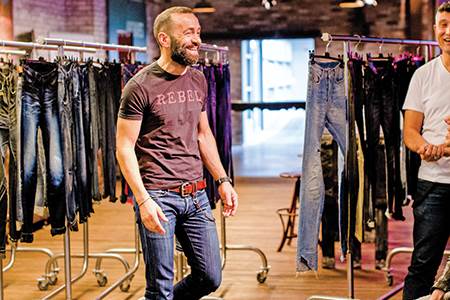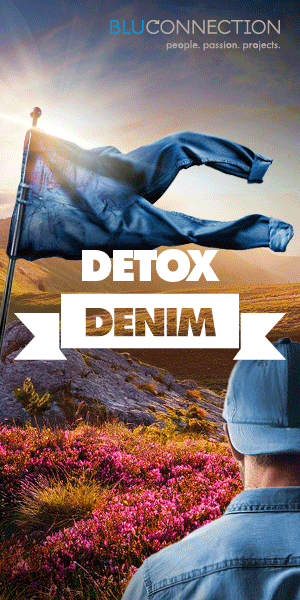Making the magic happen

Moreno De Angelis, head of Italy-based washing research centre Iskoteca, says the chemistry involved in making great jeans needs to be a key consideration throughout the entire process.
Q What should the industry be focusing on?
A Over the last two years, there have been many changes within the industry. But this has given brands the opportunity to adapt and have a new vision for the future. The new textile industry set-up needs to be fully integrated and with a completely circular approach. Making this happen is only possible through radical and long-term programmes and partnerships with one vision for the entire supply chain.
What are your favourite types of projects to work on?
What really gets my heart pumping is working with a designer who has a really great vision and being able to translate that vision into a real ready-to-wear garment. I remember once, after a long discussion with a designer, I was unable to fully understand his expectations on his chosen fabric. The last piece of inspiration that I got from him was an image of [The Doors’ lead singer] Jim Morrison, singing under the glow of a red light. He sent it to me and said, “This is what I mean.” It was in that moment that I understood that my role was to “break on through to the other side”.
How does your background in chemistry inform the way you approach things?
Chemistry plays a significant role in our business. My background in this area helps to make many different variables understandable. From eco-sustainability, to greenwashing, to the choice of one fabric wash over another. Laundries especially are like a chemistry lab, where we work to make the ‘magic’ happen. However, the main challenge that I am facing in our industry is with the transferability of this chemical knowledge from the beginning of the design process right through to the engineering of the product. Keeping this in mind throughout the whole chain will significantly help the efficiency of the process and therefore the sustainability.
How do you work with Isko’s fabric developers in term of achieving end results?
This is one of our key successes as a company, helped by our integrated 360-degree approach. We have a large R&D department at Isko which works on developing great fabric innovations but the final result cannot be achieved without the input from the laundry. At this stage, where all fabrics get their final make up, we can see the wider result of all processes by testing the fabric with the right chemical and wash recipes all within a closed-loop system. This is then fed back to the R&D teams and to our customers, so that we can achieve the desired end result.
If money was no object, what machinery or technology should be used for all jeans?
There is no one technique that is better than another, there is only the correct technique that is needed for that particular look to be achieved on that specific fabric. The way in which the weaving, washing, sewing and packaging processes are selected will have a significant impact on the efficiency of the production and also on the environmental and economic impact.
What I am hearing a lot in regards to washing technology is always related to ozone and laser techniques, which have both existed in the industry for almost 20 years. It is much better to use this technology in the correct and most efficient way to deliver the desired result. Digitalisation in this area is also helping to propel these processes forward to achieve Laundry 4.0.
How do you see the industry changing over the next few years?
Laundry processes are changing dramatically and in two directions. Firstly, fabrics will not drastically change during the washing process but instead gently emphasise its original characteristics. To achieve this, we need greater knowledge of the raw materials to make the right choice when designing the product.
Secondly, a change is coming from the latest technologies using fewer mechanical actions, which will reduce overall water and energy consumption. In other words, the traditional processes where denim was treated in various tumbler machines will be transformed into a static process. The fabric will be cut and then laser washed in one step only. Then the stitching, and the jeans dried in standing cabins. The future is coming!
What makes you happiest?
When I am in the shops with my daughter Giulia and she recognises a pair of jeans that she already saw in my office some years ago because that’s exactly where they come from, and I could not be any prouder.
Moreno De Angelis is the garment washing manager for Turkish group Isko at Iskoteca, its Italian research centre for finishings based in San Benedetto del Tronto. Mr De Angelis has more than 20 years’ experience in consultancy for industrial laundries and previously worked for Dolce & Gabbana as a technical manager for denim. He has been with Isko for 14 years, working closely with brands, laundries and the R&D teams to create samples and prototypes and develop the global collection.
All Photos: Iskoteca













